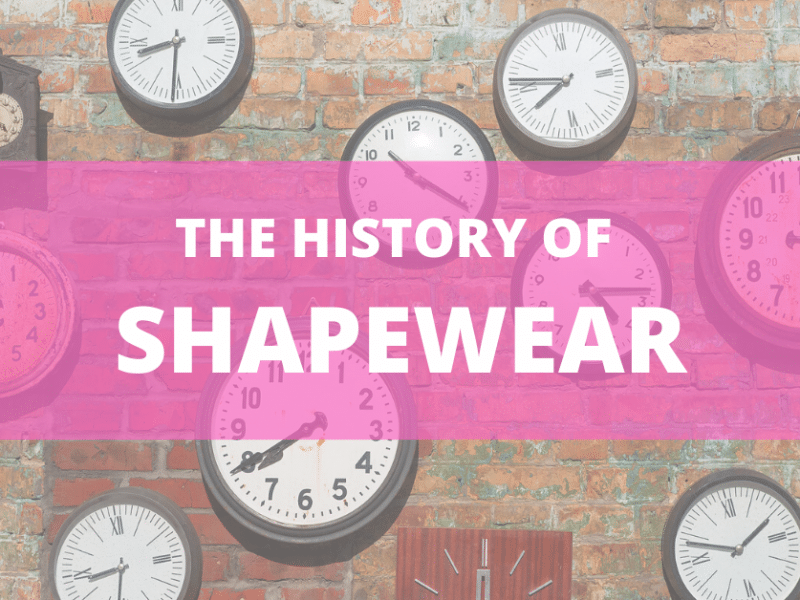When was shapewear ‘invented’? How established is this tradition of dressing? How does it reflect the position of women through history? You may think of the foundation garments that we take for granted today as emerging with the Hollywood pin up. Or, earlier still, those Victorian corsets which notoriously caused fainting fits across London drawing rooms! Well, as a barometer by which we can look at women through history, shapewear is an enlightening one. Women have changed their body shapes as far back as the Ancient civilisations of Greece and Rome. And it’s been there as a constant ever since. So what can we learn from womankind’s historical shapewear journey?
A Brief History of Shapewear Time
Ancients
Girdles are referred to in ancient Greek texts, so were already in widespread use at this time. They were constructed with firm linens and soft leather, with elaborate embellishments that made this level of clothing as important as outer garments. The Romans introduced an element of breast binding, favouring a different shape. This is where we start to see changing fashions of female shape being assisted through early shapewear.
History Books
This covers the historical eras that we all touched on at school. So from the Middle Ages through the Renaissance to Regency and Victorian periods. One constant piece of shapewear through these several hundred years was the corset. This one garment in its various guises could boost or suppress breasts, and elongate or accentuate waists. Depending on the fashion of course! Skirt frames and bustles to supplement hips and bottom meant that extreme shapes were prominent.
20th Century
This is when things began to change at pace. With austerity of resources following the first world war, heavy duty dress structures were suddenly out. Bras came into mainstream use and women achieved the flapper flat frame with gentler fabric camisoles. As the hourglass came back into fashion from the 1940s through the 1950s, the foundation of choice was the reinvented girdle. With new materials such as plastics and elastic, ever more subtle shapes could be achieved. So fashionable body shapes for women changed every decade or so.
Today
Until more recent times, that is. With the turn of the 21st century, the overriding fashion seems to be variety of shape. Anything goes. The body positivity movement strives to pave the way for women to love their bodies. We tend to use shapewear in a different way now – for confidence and to create a specific ‘look’ that is of our choosing. We can look very different from one day to the next, and we celebrate that choice.
What’s Changed?
Shape
So, yes, shape fashions have changed. And what’s most important about modern attitudes is that we can be empowered by exercising control over our shape. There is greater freedom than ever before to present an image that expresses yourself rather than following a trend.
Materials
With technological advances in materials, the shapewear of today offers sleek lines without damaging your body. Gentle and smooth elastics and lycra mean that comfort is key for modern shapewear. A world away from whale bone corsets and lead girdles!
Attitudes
Shapewear is no longer something to be kept secret. If you want to control your silhouette, you don’t have to do it surreptitiously. From Oprah to the Kardashians, celebrity women have paved the way for all of us to be more relaxed when it comes to shapewear.
Accessibility
Maybe the biggest revolution in shapewear development hasn’t been material technology, but internet technology. With online shopping, we all now have access to a huge range of shapewear solutions for every occasion. You could be looking for everyday control briefs or a control slip for a very specific evening dress. You can source quality foundation garments online to enable you to easily choose your shape and take control.
Becky is an author and copywriter who has been writing about women’s issues and underwear for several years. She also writes blogs which cover a range of topics for local businesses.

 Give Your Lingerie Collection Some Love This Valentine’s Day
Give Your Lingerie Collection Some Love This Valentine’s Day
